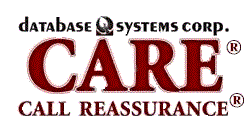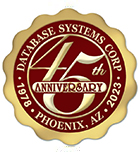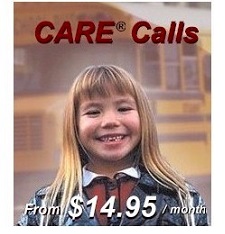|
|



Home-Alone Kids: The Working Parent's
Complete Guide to Providing the Best Care
for Your Child. - book reviews
by: Patricia Rowe
 In almost any workplace between 2:30 and 5:00 every afternoon, feelings of guilt and concern are pursuing America's working parents. Each day thousands of parents interrupt their work to make or receive check-in calls on their children at home. During these interruptions, labeled the "three o'clock syndrome," businesses report productivity slowdowns, increases in assembly-line accidents, and absenteeism. For the next two or three hours these children-as many as seven million according to some estimates-will be on their own, caring for themselves and perhaps their siblings, until their parents arrive home.
In almost any workplace between 2:30 and 5:00 every afternoon, feelings of guilt and concern are pursuing America's working parents. Each day thousands of parents interrupt their work to make or receive check-in calls on their children at home. During these interruptions, labeled the "three o'clock syndrome," businesses report productivity slowdowns, increases in assembly-line accidents, and absenteeism. For the next two or three hours these children-as many as seven million according to some estimates-will be on their own, caring for themselves and perhaps their siblings, until their parents arrive home.
Home-Alone Kids: The Working Parent's Complete Guide to Providing the Best Care for Your Child was written for parents who must rely on self-care for all or part of the time their children are not in school. Positive and practical, the 160-page guidebook provides a framework to help parents evaluate whether self-care is appropriate for their child. Written clearly and sympathetically, it contains useful ideas for reducing stress and making the self-care experience a safer, happier one for both parent and child.
Guidelines and checklists are designed to enable parents to establish a self-care agreement that creates a sense of security and structure for the family and balances their needs. Suggestions for preparing children to handle the basics of self-care are included, along with a discussion of alternatives to consider if self-care isn't working.
The book was written by three child development experts who have spent several years conducting research and designing programs for self-care children. Bryan E. Robinson and Bobbie H. Rowland are professors of child and family development at the University of North Carolina at Charlotte, and Mick Coleman is an extension specialist in child and family development at the Extension Division of the University of Georgia.
The authors believe that "ideally, children should always be supervised by responsible adults whether at school, home or play. But today there are many situations in which children find themselves home alone without adult supervision because their parents have no alternatives. " Pointing out that the self-care experience doesn't necessarily produce a negative effect on children, the authors stress that a key to successful self-care arrangements is structure. "Parents and children should work together to develop rules and routines that both agree to follow," they assert. "Having these rules in place helps make children feel that they are being supervised-even when their parents aren't present." Safety precautions and learning what to do in an emergency or accident are part of this informal contract.
Home-Alone Kids proposes a series of critical questions that parents must answer before deciding on home-alone care for their child. Among these are: Do I have a positive attitude toward my child's home-alone experience? Is my child old enough to be left alone? Regardless of age, is my child emotionally mature enough to assume the responsibility of self-care? Parents should also examine the availability in their community of a support system and social service resources and facilities. These would include neighbors the child can check in with, nearby emergency services, phone hotlines children can call if they're lonely or anxious, and self-care training programs for children developed by civic and youth organizations.
Because children living in high crime urban areas are at greater physical and psychological risk than those living in relatively crime-free rural and suburban settings, parents are advised to consider the location of their home and safety of the neighborhood as important factors in weighing self-care. Other vital considerations in making a judgement for or against home-alone care are the length of time the child will be left alone and the type of check-in system the parent will use.
The parent can decide if the child has a high- or low-risk rating for self-care by computing the child's score on the HART (Home-Alone Risk Test). Another section details ways of monitoring the child's adjustment to self-care once it is under way. Behavorial changes and signs of stress-including emotional upset and nervousness, expressed feelings of isolation and boredom, irritability and sullenness, and sliding grades-alert the parent to adjustment problems and require a reevaluation of home-alone care.
Comments culled from interviews reflect the dilemma of working parents who must cope with the "tight-wire act" of juggling work and family life. As one working parent explains, "I spend all my time either working to provide for my family, worrying about the safety of my child who is at home alone, or feeling guilty about neglecting my family." To counteract mental, emotional and physical stress and strenghthen family bonds, the authors encourage working parents to plan for quality time with their children, negotiate rules of behavior and household duties, develop flexible family problem-solving techniques, cultivate a spiritual life, and identify life priorities and goals.
Finally, Home-Alone Kids explores options to self-care, such as after-school extended day care programs, church- and employer-sponsored after-school care, family day care homes, and programs offered by recreation service agencies. An extensive resource section lists a wide array of books, magazines, newsletters, audiovisuals and organizations that provide information on self-care issues, training programs for children and imaginative after-school programs and activities the parent can adopt in his or her own community.
Articles About Latchkey Kids
Home Alone Children Calling Program
Database Systems Corp. (DSC) is a technology company that has been in business since 1978. DSC has developed several call processing solutions that are ideally suited for community notification and alert services.
One of the most important solutions developed by DSC is its CARE (Call Reassurance) telephone service. The CARE telephone reassurance system calls elderly residents or home alone children. These calls are made to ensure the well-being of these individuals.
CARE systems have been installed and operational at many law enforcement and community service organizations throughout the country. These systems primarily check-in on the welfare of shut-in seniors, but also to check-in on latchkey children.
DSC develops and markets these community notification phone systems, but also provides individual calling services for parents who wish to enroll their child into our automated calling program.
How Do I Enroll My Child?
DSC provides an easy and secure sign-up procedure (For a quick overview, please visit the registration information web page). Everything can be done using our Latchkey Kids website.
- Online Enrollment - Sign-up online using our secure website.
- Child's Profile - Specify your child's profile (window of time to make calls to your child).
- Name Contacts - Identify who we need to contact if we can't reach your child.
- Secure Payment - Choose one of several enrollment and payment options and pay online using Visa or MasterCard.
DSC provides online and phone management of your account. This lets you view a history of the calls. You can also manage the dates and times for these calls including vacation days.
Plus our service is performed automatically - there are no operators involved so we can ensure your child's privacy.
CARE Information
Contact DSC to learn more about our CARE home alone children calling service and phone systems.
|
|




 In almost any workplace between 2:30 and 5:00 every afternoon, feelings of guilt and concern are pursuing America's working parents. Each day thousands of parents interrupt their work to make or receive check-in calls on their children at home. During these interruptions, labeled the "three o'clock syndrome," businesses report productivity slowdowns, increases in assembly-line accidents, and absenteeism. For the next two or three hours these children-as many as seven million according to some estimates-will be on their own, caring for themselves and perhaps their siblings, until their parents arrive home.
In almost any workplace between 2:30 and 5:00 every afternoon, feelings of guilt and concern are pursuing America's working parents. Each day thousands of parents interrupt their work to make or receive check-in calls on their children at home. During these interruptions, labeled the "three o'clock syndrome," businesses report productivity slowdowns, increases in assembly-line accidents, and absenteeism. For the next two or three hours these children-as many as seven million according to some estimates-will be on their own, caring for themselves and perhaps their siblings, until their parents arrive home.
